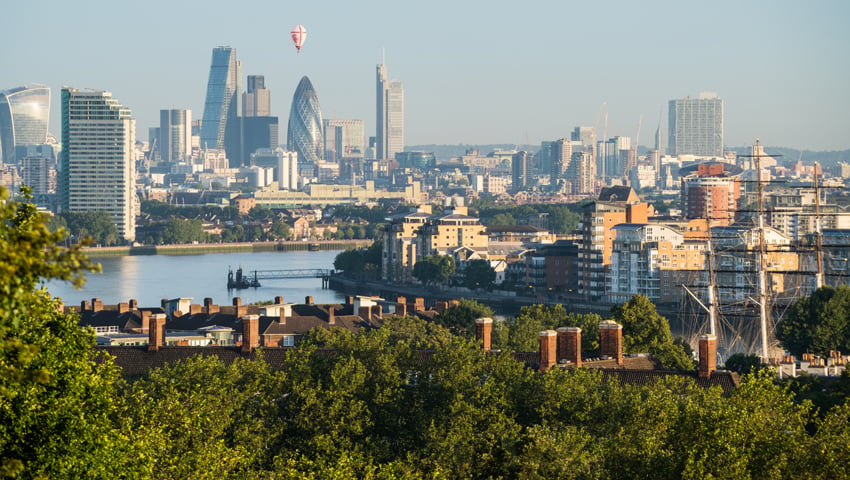The Grantham Research Institute on Climate Change and the Environment and the Place-Based Climate Action Network have called for the UK Government and devolved administrations to lead the co-creation of a national (UK-wide) strategy for heat risk preparedness and management which prioritises the reduction of threats to human health, the environment and the economy.
“Turning up the heat: Learning from the summer 2022 heatwaves in England to inform UK policy on extreme heat” provides insights from the perspectives of key stakeholders who had direct experience of responding to the 2022 heatwaves across different cities and regions in England. The report analyses their experiences to inform future preparedness and responses for extreme heat.
In the report, the authors, led by Dr Candice Howarth, state that the “2022 heatwaves serve as a warning to policymakers and practitioners – but also offer an opportunity to reflect on what is needed to better prepare for heat in the future.”
From their primary research the authors found that decision makers and practitioners, such as Local Authorities, national government departments, the London Fire Brigade, ambulance service, communities and utilities providers working on the frontline of the 2022 heatwave response were “severely stretched” and “struggled to keep on tasks during the response.”
2022 was the warmest year on record for the UK, 2023 was the second warmest, and the 10 hottest years the country has experienced have all occurred since 2002. Without efforts to mitigate greenhouse gas emissions, 2022 could become as frequent as once every 3.5 years by 2100.
Stakeholders in the focus groups and interviews felt that the “UK is not yet prepared for future heat risk events if they are more extreme than what was experienced in 2022.” Participants stated that preparedness “did not match the scale of the issue, with reports of stakeholders being taken by surprise, slow decision-making and avoidable impacts.”
In London “resources were extremely stretched with limited capacity to adequately respond during the heatwave response, with the challenge of multiple stressors included a high number of fires in the greater London region, transport disruption, and impacts to health and wellbeing.” 19 July 2022, when temperatures exceeded 40 degrees Celsius, was described as the busiest day for the London Fire Brigade since the Second World War.
Whilst summer 2022 is currently considered to be exceptional, and summer 2023 was far less extreme for the UK, heatwaves are projected to become more severe, lengthy and frequent in the UK in the future.
These will have widespread impacts on human health, the economy, our buildings and infrastructure, and the natural environment. Significant health impacts can occur at moderately high temperature thresholds, particularly in buildings that are not equipped to deal with extreme heat and which lack adequate ventilation and cooling. This is especially concerning given the UK’s building stock is one of the oldest and most inefficient in Europe.
Land use and nature
In relation to land use and natural capital, the report says, “Risks to the natural environment from extreme heat need to be better addressed while recognising the role of nature-based solutions to heat risk. Installing green and blue infrastructure has huge potential for supporting society to adapt to heat risk, and enabling policies can support such initiatives, such as tree planting. Greater awareness of the potential for greening measures at the household level can help people to manage indoor temperatures during heat events.
“The risks of heat and wildfire to nature also have profound implications for a wide range of policy priorities. For example, increases in these risks affect the assumptions behind the role that nature can play in enabling the UK to achieve net zero targets. Stress testing should be carried out, with consideration of scenarios that include multiple, overlapping wildfire events across different geographies and landscapes. New policy and investment may be needed to protect crucial carbon sinks, address wildfire risks to agriculture, and reduce water temperature, protect important fish spawning sites and reduce the risk of water bodies drying up.”
Without urgent, radical action to curb greenhouse gas emissions, the UK is very likely to be affected by extreme heatwaves more frequently in the future. Met Office projections show that by the middle of this century, a heatwave of the magnitude experienced in 2018 (which at the time was the joint hottest summer on record) would have a 50 per cent probability of occurring every year.
National government departments and local authorities’ representatives interviewed for the research felt “that heat preparedness and strategies were inadequate to deal with the extreme heat, and that issues such as slow or reactive decision-making processes had limited the responses.”
Across the Yorkshire and Humber region participants spoke about “a lack of resources and suffering from crisis fatigue or disaster exhaustion, along with pressure to deliver, and the need for better public campaigns to increase education and preparedness about heat risks.”
In the report the authors also call for the Government to future-proof buildings and infrastructure against extreme heat, enhance public and private funding available for cross-sectoral heat risk preparedness and to enhance public communications on heat risk.
Across the regions the report focused on in England (London, Manchester and the Yorkshire and Humber), commonalities emerged with participants often highlighting issues with a lack of preparedness for the heat, a lack of specific resources and funding, as well as the need for better communication, public engagement and to tackle the risks posed by heat.
